CCFD Strategic Plan 2022-2027
2022-2027 CLARK COUNTY FIRE DEPARTMENT STRATEGIC PLAN
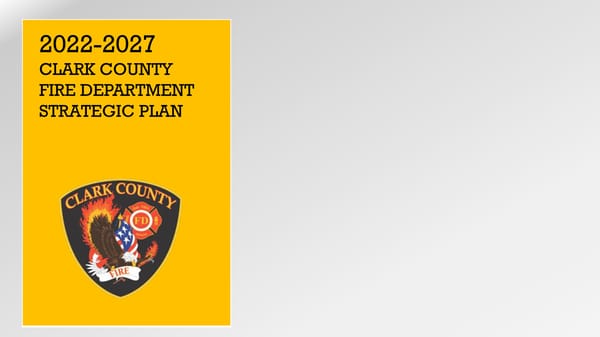

Message from the Chief It has been my honor to serve as Clark County Fire Chief since February 2020. The past several years have been extraordinarily challenging for the Clark County Fire Department. The COVID-19 Pandemic drove many of the opportunities and challenges we faced, and significantly affected our operations. This five-year strategic plan is intended to build upon previous plans implemented by the department; while acknowledging we must adapt and change to meet new and more difficult challenges today and in the future. This plan will build on our accomplishments, identify best practices we wish to continue, and draw from lessons learned from which we can improve. While we often must adjust to economic and regulatory realities, it is important that we recognize the importance of a strategic plan that provides a clear blueprint and strong basis for improving operations throughout the department. We appreciate the support from our community partners, the public, the Board of County Commissioners, and the County Manager’s office. Most importantly, we must acknowledge the dedicated and hard-working employees of the Clark County Fire Department who work tirelessly to serve the residents of and visitors to our community. There is no higher priority for me as the Fire Chief than to ensure the personal health and safety and mental well-being of every member of the Clark County Fire Department. With gratitude, John C. Steinbeck Clark County Fire Chief
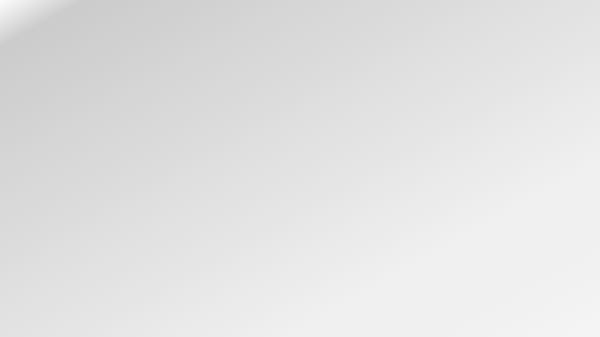
Department Overview The Clark County Fire Department (CCFD) serves all unincorporated Clark County, at nearly 8,000 square miles, about the size of the state of New Jersey, on behalf of a population of 2.4 million. Clark County’s jurisdiction includes the internationally famous Las Vegas Strip, encompassing most of the world’s largest hotels, housing more than 151,000 hotel rooms. The Las Vegas Strip includes arenas, stadiums, showrooms, convention facilities, shopping venues, and dozens of major indoor and outdoor special events, attracting nearly 40 million tourists each year. The men and women of CCFD perform remarkably every day, under the most stressful and challenging circumstances. Each day, they face personal risk to their health and safety, and major events such as the COVID-19 pandemic and the 1 October shooting of 2017 have taken a significant toll on being able to adequately retain, train, motivate, and sustain the health and well-being of our employees. CCFD supports 32 full-time fire stations as well as 10 volunteer fire stations. The 936 authorized positions and approximately 104 volunteers, support services such as Arson Investigations, Emergency Medical Services, Fire Prevention/Inspections, Fire Suppression/Operations, the Office of Emergency Management & Homeland Security, Airport Operations, Special Events, and internal services such as Fire Administration/Finance, Information Technology, Recruitment, Training, Logistics, Employee Assistance/Wellness, and Community Outreach/Public Relations/Media. CCFD personnel respond to over 150,000 incidents per year, including more than 120,000 medical incidents, and over 800 hazardous materials incidents. CCFD also oversees grant funding and administration of the Nevada Urban Search and Rescue Task Force (NVTF-1), one of only 28 FEMA- funded federal urban search and rescue task forces in the United States. The highly trained and experienced NVTF-1 responds to major disasters throughout Nevada and across the United States.
CLARK COUNTY FIRE DEPARTMENT 2023 Organization chart John Steinbeck Fire Chief Kelly Blackmon Thomas Jennifer Wyatt Billy Samuels Warren Rian Glassford Sr. Deputy Chief Touchstone Deputy Chief Deputy Chief Whitney Deputy Chief Fire Prevention / Deputy Chief Emergency Office of Deputy Chief Fire Training / Finance /Admin Operations Medical Emergency Mgmt Special Events Recruitment Srvcs/Finance Danny Scott Steve Brian Carlito Carnahan Mack Travis Horvat De Pue O’Neal Rayos Assistant Assistant Assistant Assistant Chief Assistant Chief Chief Chief Chief Assistant Chief Recruitment Fire Plans Check Airport EMS Rural Srvcs Fire Investigations Wayne Dailey Assistant Chief Fire Inspections John Baynes Assistant Chief Logistics
CLARK COUNTY FIRE DEPARTMENT 2024 Organization chart John Steinbeck Fire Chief Thomas Jennifer Wyatt Billy Samuels Rian Wayne Steve DePue Touchstone Glassford Dailey Deputy Chief Deputy Chief Deputy Chief Deputy Chief Deputy Chief Emergency Medical Office of Fire Training / Deputy Chief Special Events/ Operations Svcs/Finance/Admin Emergency Mgmt Recruitment Fire Prevention Law Enforcement Sean Brian Mack Danny Carlito Imad TBD Travis Horvat Rayos Bachir Collins O’Neal Assistant Chief Assistant Assistant Assistant Assistant Manager Operations Assistant Chief Chief Chief Chief Chief of Info. EMS Rural Srvcs Recruitment Fire Plans Fire Technology Check Investigations Scott Carnahan Assistant Chief Airport John Baynes Assistant Chief Logistics
Achievements/Initiatives/Program Highlights (2020-2023) Significant events, milestones, program achievements, and operational accomplishments for CCFD from 2020-2021 2/7/2020 Board of County Commissioners ratified John C. Steinbeck as Fire 1/8/2021 Opening of Station 61 Chief 2/24/2020 CCFD was reclassified to an ISO Class 1 rating for it's exemplary fire 3/4/2021 Class of 20-2 Graduated 21-member rookie firefighters suppression program from the Public Protection Classification Program 5/26/2021 Opening of Station 30 March 2020 Emergency Declaration and Activation of the Clark CountyMuti-Agency 8/29/2021 35 members of NVTF-1 deployed to Hurricane Ida Coordination Center in response to COVID-19 pandemic 10/4/2021 Class of 21-1 graduated rookie class, with 60% graduating as paramedics May 2020 Deployed Community Based COVID-19 testing, 490,000 tests administered by December 2020 11/1/2021 Fire Prevention Division returned from Building Department to CCFD July-October Administered 8 FEMA Deployments of Nevada Urban Search and January - CCFD partnered with SNHD and other agencies to continue mitigation and 2020 Rescue Task Force (NVTF-1) to natural disasters in Louisiana and December response to the COVID-19 pandemic, including expanded testing and vaccination Oregon 2021 sites 7/6/2020 Awarded the FY20 Assistnace to Firefighters Grant (AFG) for COVID-19 January - Suppression responded to 152,262 total incidents support ($469,462) December January- Suppression responded to 126,706 total incidents 2021 December January - Training Division oversaw 260,070 personnel training hours 2020 December 2021 January- Training Division oversaw 280,171 personnel training hours January - Fire Prevention conducted 61,524 inspections and 9,425 plan reviews December December 2020 2021
Achievements/Initiatives/Program Highlights (2020-2023) – continued Significant events, milestones, program achievements, and operational accomplishments for CCFD from 2022-2023 3/21/2022 Class of 22-1 graduated class of 18 with 89% being 7/1/2023 Added 40 supplemental positions which included the creation of a 5th paramedics battalion 7/1/2022 Added 62 supplemental positions January - Completed two of the largest recruit academies in department history December with a total of 129 graduating firefighters. 8/2/2022 Additional Rescue 233 was deployed at Station 33 2023 8/9/2022 Opening of Station 35 in Summerlin January – Activated Clark County Multi-Agency Coordination Center (MACC) to December support Mt. Charleston Flooding, Formula 1, NYE and UNLV Shooting August 2022 Secured $757,979 of funding through Assistance to 2023 Incident. Firefighters Grant 8/1/2023 Deployed NVTF-1 providing aid from the deadly wildfires in Maui. 10/31/2022 Heavy Rescue Unit was staffed full time at Station 21 January – Several new frontline units were put in service: EMS33, E215, E30, December R215, R223 and R66. 10/31/2022 Additional Rescue Unit was deployed at Station 24 2023 12/1/2023 Secured over $23 million of supplemental reimbursement payments through the Ground Emergency Medical Transport (GEMT) Program.
Clark County Fire Department 2022 Summary RESOURCES # of Fire Stations Responses 2022 Activities Highlights of the Year Full-time Units Full-time 32 28 ALS Engine Companies Volunteer 10 189,009 156,108 Opening of Fire Station 35 26 ALS Rescues Total Units Total Incidents 4 ALS Squads 789 5,451 Addition of 62 FY23 Priority 1 EMS Response Time Compliance 6 ALS Truck Companies Total Transports Fire Incidents Supplemental Positions Goal = 90% 4 Battalions 63,778 121,269 Deployment of Rescues 24 5 Red Dog Units Total Completed Inspections EMS Incidents and 33 5 Support Units 84.3% 84.8% 76.3% 83.5% 94.7% 93.8% Volunteer Units 14,485 796 Full-time Staffing of 1 ALS Rescue Authorized Positions Total Plans Reviewed Hazardous Incidents Heavy Rescue 21 4 Rescues Suppression 742 28,592 Zone 1 Zone 2 Zone 5 Zone 6 Zone 7 Zone 8 10 Engine Companies Fire Prevention 84 All Other Incidents 11 Squads Support 71 (false alarm, smoke scares, etc.) 4 Water Tenders Volunteer Personnel 1 Support Unit Approx. 93 Average Response Time for First Arriving Units Automatic Aid Responses on Emergency Calls Only Full-time Station Responses Cities of Las Vegas and North Las Vegas Only 15,527 13,002 County to CLV to County Fire 1:01 5:07 Travel 11,819 CLV NLV to County 1:12 Turnout 10,115 9,279 9,205 19 5:40 7,525 7,214 8,218 7,170 6,732 17 EMS 1:19 Alarm 6,868 6,287 6,798 % % 1:59 6,071 5,963 5,315 5,986 5:32 4,424 5,340 4,349 Other 1:06 3,052 3,485 3,449 2,833 1:33 1,660 3,015 1,984 1,990 83 81 829 1,260 0:00 1:12 2:24 3:36 4:48 6:00 745 % % 111213 1415161718 19202122 23242526 27282930 3132333435 38616566 768587 S S S S S S S S S S S S S S S S S S S S S S S S S S S S S S S S
Clark County Fire Department 2023 Summary RESOURCES # of Fire Stations Responses 2023 Activities Highlights of the Year Full-time Units Full-time 32 30 ALS Engine Companies Volunteer 10 178,515 146,626 Addition of 40 Supplemental 30 ALS Rescues Total Units Total Incidents Positions which included the Priority 1 EMS Response Time Compliance th 3 ALS Squads 856 5,594 Creation of a 5 Battalion Goal = 90% 6 ALS Truck Companies Total Transports Fire Incidents Deployment of Additional 4 Battalions 66,520 114,011 Full-time Resources EMS33, 5 Red Dog Units Total Completed Inspections EMS Incidents E215, E30, R215, R223, & R66 95.8% 96.2% 95.7% 96.3% 6 Support Units 77.4% 81.6% 84.6% Volunteer Units 14,924 838 Completion of the Largest Authorized Positions Total Plans Reviewed Hazardous Incidents Recruit Academy with a Total 1 ALS Rescue Suppression 766 129 Graduated Rookies 4 Rescues Fire Prevention 87 26,183 10 Engine Companies Support 83 All Other Incidents Deployed NVTF-1 Providing Zone 1 Zone 2 Zone 5 Zone 6 Zone 7 Zone 8 Zone 9 10 Squads TOTAL 936 (false alarm, smoke scares, etc.) Aid from the Deadly Wildfires 5 Water Tenders Volunteer Personnel in Maui 2 Support Units (UTVs) Approx. 104 Average Response Time for First Arriving Units Full-time Station Responses Number of Suppression Personnel on Emergency Calls Only 13,379 with Relates to Years of Experience 11,035 11,148 4:47 Travel 9,717 Fire 0:47 Turnout 8,212 8,863 8,448 1:21 Alarm 7,380 7,810 6,410 6,384 5:51 5,886 6,337 6,303 5,790 EMS 1:17 4,946 4,567 5,201 2:04 4,419 4,869 4,114 4,132 3,128 3,307 3,216 6:48 2,939 1,920 Other 1:08 1,428 1,839 1,940 1:34 1,035 Years of 22 and 635 Experience 0 to 3 4 to 6 7 to 9 10 to 12 13 to 15 16 to 18 19 to 21 Over 0:00 2:24 4:48 7:12 11 12 13 14 15 16 17 18 19 20 21 22 23 24 25 26 27 28 29 30 31 32 33 34 35 38 61 65 66 76 85 87 # of Personnel 172 121 92 40 60 64 80 111 S S S S S S S S S S S S S S S S S S S S S S S S S S S S S S S S
The 2023 fires in Maui were devastating and heartbreaking. As a community, we were grateful for the opportunity to send fifty members of Nevada Task Force One (NVTF-1), seventeen from CCFD, responded to support and were instrumental in the search and recovery efforts, finding many victims. The professionalism and compassion displayed by the Nevada Task Force One team, as recognized by FEMA, are qualities that exemplify the highest standards of emergency response. It is indeed something to be proud of, as it demonstrates the resilience and selflessness of those who step forward to assist in times of crisis. Fire Chief John Steinbeck

Department Vision The Clark County Fire Department is driven to be a national leader in the Fire Service. We will become a fully integrated, cohesive, and valued member of our community, operating at the highest level of efficiency. Clark County residents, businesses and visitors can be confident they are in the safest community and resort destination in the world.
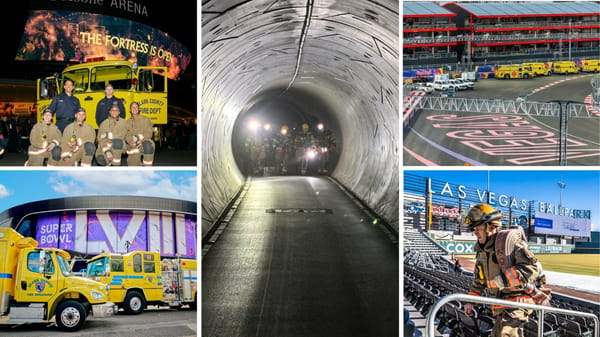
Department Mission The Clark County Fire Department provides for the safety and health of our Southern Nevada communities and our visitors through professional emergency response, fire prevention, and public education. Department Core Values The men and women of CCFD are committed, every day, for every citizen and visitor, to aspire to these core values, while at the same time conducting themselves with honor and compassion. They strive for excellence while demonstrating with each community interaction the utmost in ethics, responsibility and public trust. The employees of CCFD stand for the following core values: • Accountability – to the public, to county and department leadership, and to each other. • Competence – achieving the highest level of skills and abilities through ongoing experience, training and education. • Integrity – demonstrating ethical behavior, trustworthiness, and responsible use of public funds. • Professionalism – demonstrating respect, dedication to public service, and professional demeanor with peers, co- workers, and community partners.
DEPARTMENT PRIORITIES AND GOALS This strategic plan update builds from previous planning efforts and incorporates significant input from both department leaders and staff. The plan is intended to be implemented over the next five years, with annual progress reviews and Priority 1: Focus on and Increase Employee Wellness updates. Progress will be measured using agreed-upon performance measures and Priority 2: Improve Processes for Recruitment, Training, and periodic employee surveys to ensure Retention accountability. This plan provides a blueprint for future success, with an understanding that a Priority 3: Increase Capital Improvements/Funding Sources degree of flexibility is needed to accommodate changing economic, regulatory, and policy conditions that may change over time. Priority 4: Increase Community Engagement/Education in Based on the employee survey results, facilitated Emergency Preparedness and Fire Prevention interviews and meetings with CCFD leadership Priority 5: Expand Best Practices and Implement Improvements to and staff, and meetings with county leadership, Fire and EMS Operations, Fire Prevention, and Investigations these are the top five priorities for the next 5 years:
PRIORITY 1 Focus on and Increase Employee Wellness Goal 1: Identify and implement risk management strategies that reduce on-the- job injuries, sick leave, and medical retirements. Goal 2: Implement assessment tools and employee assistance programs that support and encourage employees to address mental health concerns.
Organizational success is inherently tied to the well-being of Our plan is to introduce an assessment tool to identify, address, and its employees. Recognizing this crucial connection, CCFD support mental health concerns among employees. The tool, has embarked on a journey to develop a comprehensive developed in collaboration with mental health professionals, will be and forward-thinking strategic plan to prioritize employee user-friendly and confidential, ensuring employees feel comfortable wellness. This plan addresses two primary goals: reducing sharing their experiences. on-the-job injuries, sick leave, medical retirements, and implementing a robust assessment tool to promote mental The assessment tool will provide personalized recommendations/ health awareness and support. assistance based on individual responses, guiding employees toward resources and interventions that cater to their unique needs. To achieve the first goal, our strategic plan emphasizes The implementation of this tool will be complemented by a series of proactive measures aimed at minimizing on-the-job injuries mental health awareness campaigns and departmental trainings. and their subsequent impact. Our strategy begins with a These initiatives will help destigmatize discussions about mental comprehensive review of workplace safety protocols and health, foster a supportive community, and promote open procedures. This involves collaborating with cross- conversations within the organization. functional teams to identify potential hazards, assess ergonomic standards, and implement necessary changes to ensure a safer work environment. Regular safety training sessions will be conducted to ensure employees are well- informed and equipped to mitigate risks. Furthermore, a strong emphasis will be placed on employee wellness programs that encourage healthy lifestyle choices. Initiatives such as fitness challenges, nutritional guidance, and wellness workshops will be integrated into organizational culture to support employees in making positive choices that contribute to their overall well-being.
A successful execution of this strategic plan requires a phased approach. Key stakeholders, including senior management, HR personnel, and health and safety teams, will collaborate to ensure a seamless implementation. Clear communication channels will be established to keep employees informed about the plan's progress and to gather feedback for continuous improvement. CCFD is committed to enhancing employee wellness and improving workplace culture. By addressing physical risks, promoting healthy choices, and prioritizing mental health, it is anticipated that there will be significant improvements in employee well-being, resulting in a healthier and more productive workforce. This strategic endeavor not only aligns with CCFD’s organizational values but also underscores the dedication to fostering an environment where employees can thrive both professionally and personally.
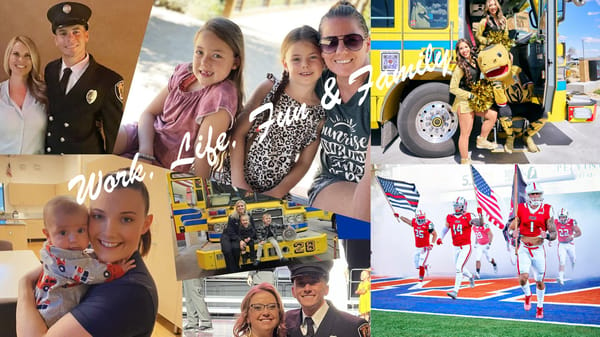
PRIORITY 2 ▪ Improve Processes for Recruitment, Training, and Retention ▪ Goal 1: Identify and implement process improvements to streamline and shorten the timeframe for recruiting and hiring new staff. ▪ Goal 2: Plan for future staffing needs due to community growth, employee retirements and attrition. ▪ Goal 3: Implement policies, programs, and procedures that improve employee work/life balance, enhance employee recognition, and increase morale..
The COVID-19 pandemic had a profound impact on various CCFD is committed to fostering a talented and diverse workforce aspects of society, including government departments and their that reflects the community it serves. Recognizing the importance of operations. For CCFD, the most significant consequence was the this mission, CCFD has established a dedicated Chief Officer suspense of testing and hiring. This disruption had far-reaching responsible for recruitment and mentoring. This pivotal role focuses implications for maintaining adequate staffing levels and on identifying exceptional candidates and guiding them through a meeting the operational demands, especially with the resort comprehensive mentoring process, resulting in the cultivation of industry and special events bringing in more visitors than ever highly qualified individuals for the fire recruit academies. Even with to the community. Further complicating matters, the this new programming in place, CCFD will be operating in a department’s workforce is undergoing a natural evolution, with personnel shortage for a considerable time and therefore needs to a large percentage of personnel having enough years to qualify invest continual effort as well as expand the existing scope of the for retirement. Recruitment is a top priority, as is our ability to recruitment division. In addition to recruiting new hires, the division onboard and train personnel to professional standards. In the must recruit internally for the position of paramedic and assist in last year alone, CCFD has put in 170 candidates for the developing leaders for supervisory positions. CCFD further firefighter position, representing nearly 20% of our workforce. acknowledges the need to augment personnel and capabilities Furthermore, CCFD recognizes the broader context of a across every division not solely fire suppression. nationwide shortage of paramedics, which poses a significant challenge to Southern Nevada, this is further exacerbated by the inadequate availability of local educational resources necessary to address the region's growing paramedic needs. As part of its comprehensive plan for growth and enhancement, CCFD is poised to embark on a series of strategic infrastructure developments to include four new stations that will be built during the time of this plan, with additional stations under consideration for future development. CCFD is also taking a significant step forward by initiating the construction of a new training center, mechanics shop, and warehouse.
HOW WE BREAK IT DOWN Goal 1: Identify and implement process improvements to streamline and shorten the timeframe for recruiting and hiring new staff. ❖One Year ❑ Increase resources in the Recruitment Division ❑ Hire HR/Recruitment Administrator Goal 2: Plan for future staffing needs due to community growth, employee retirements and attrition. ❖One Year ❑ R223 in service ❑ E62 in service at Station 61 ❑ R62 in service at Station 17 ❑ E13 in service ❑ Complete construction of Station 39 ❑ Complete warehouse renovations ❑ Complete development agreement for units at the new Hard Rock Hotel ❑ Continue to develop and implement special event units ❑ Hire IT Manager
PRIORITY 2 GOAL 2 BREAK DOWN CONTINUED ❑ Hire two new Mechanics ❑ Hire HR/Recruitment ❑ Hire new EMS Instructor ❑ Hire new Fire Training Instructor ❑ Hire two new Warehouse positions ❑ Hire additional Life Support position ❑ Promote four and put Battalion 13 in service ❑ Hire additional OEM/Grants position ❑ Expand reserve apparatus fleet including three fully equipped Engines, three fully equipped Rescues and one fully equipped Truck ❑ Begin workforce connections program for underrepresented communities to obtain EMS certifications ❖ Three year ❑ Complete Station 62 ❑ Begin construction of Station 37 ❑ Secure property for Station 68
PRIORITY 2 GOAL 2 BREAK DOWN CONTINUED Begin construction of Station 88 and the new Training Center Begin construction of Station 13 Development agreement for units at Las Vegas Athletics site Development agreements for in house units at resort properties Development agreement with Blue Diamond Arena Put Air Resource 14 in service Secure property at Cactus and Jones (Station 63) Obtain 100 additional paramedics through hiring and training current employees ❖ Five year Complete construction of Station 68 Complete construction of Station 37 Additional Rescues at 30,11, and 18 Additional Engine at 61 Additional Red Dog unit at 13 Secure property at Moapa Indian Reservation for future station Secure property in Jean for future station Secure property on Kyle Canyon Road for future station
PRIORITY 2 GOAL 3 BREAK DOWN Goal 3: Implement policies, programs, and procedures that improve employee work/life balance, enhance employee recognition, and increase morale. ❖ One year ❑ Continue to hire additional personnel to reduce the number of mandatory overtime positions ❑ Pursue additional recognition opportunities
PRIORITY 3 ▪ Increase Capital Improvements/Funding Sources ▪ Goal 1: Identify service gaps and facility needs to address population growth and demographic changes in collaboration with other county departments and community partners. ▪ Goal 2: Identify and pursue funding opportunities through grants, fee increases, and other available community, state, and federal resources. ▪ Goal 3: Develop a comprehensive general fund budget and capital improvement plan (5 years, 10 years) to address replacement of apparatus, equipment, (including personal protective equipment) and information technology to keep pace with community growth and future staff expansion. ▪ Goal 4: Identify Nevada Revised Statute and county code impediments to implementing new fee structures, policies, procedures, and programs. ▪
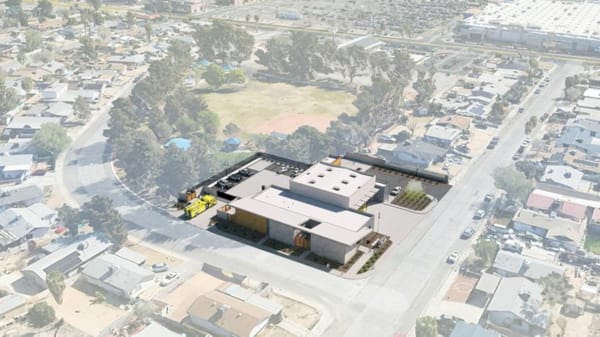
The members of this department are, by far, its greatest Personnel dedicated to locating available grant asset. However, department members cannot provide prospects could provide support to programs for the service levels expected by the community without training or expanded services for members of the adequate equipment and facilities. The cost of fire and department or the community. State and federal EMS equipment has increased rapidly over the past few funding options will be investigated to leverage all years due to inventory and supply chain issues. The cost available alternatives. of building and maintaining facilities has also increased Utilizing National Fire Protection Association (NFPA) rapidly for many of the same issues, with the added matter of staffing shortages in construction trades. standards, manufacturer’s recommendations, and the extensive experience of CCFD logistics personnel, Understanding the needs of the community is paramount improvements are being instituted in the maintenance as we plan for new fire stations. Building these stations and repair of capital items. The goal is to extend the may present an opportunity to provide a community life of equipment while limiting firefighter exposure room or co-location with EMS/private ambulance or law to fire ground contaminants and blood borne or enforcement creating efficiencies for both agencies. airborne pathogens increasing safety for personnel As the community continues to grow and calls for service and the community. increase, existing resources are continually stretched. The department will also research the newest Seeking additional funding opportunities, such as grants, technology to dispatch the closest, most-appropriate fee increases, and other available revenue sources, must apparatus to an incident to improve firefighting be a priority. capabilities, while enhancing firefighter safety. .
The fire at the Kactus Life III Project (Maule) undoubtedly marked an extraordinary and challenging moment for CCFD. The scale and intensity of this incident, involving four five-story buildings, is a testament to the dedication, skill, and bravery of CCFD’s personnel. More than 220 suppression and support personnel worked this fire that took four days to extinguish fully. It's not every day that a fire of such magnitude occurs, and it rightly garnered international news coverage. Fire Chief John Steinbeck
PRIORITY 4 ▪ Increase Community Engagement/Education in Emergency Preparedness and Fire Prevention ▪ Goal 1: Develop and implement community engagement and education plans to inform the public about fire department services and capabilities. ▪ Goal 2: Develop and implement updated programs to inform residents and visitors about community risks, threats, and hazards, emergency preparedness, and fire and injury prevention. ▪ Goal 3: Expand partnerships with Social Service, LVMPD, and other community partners to better address needs of at- risk/vulnerable populations to reduce the number of transports and medical calls. ▪
The Clark County Office of Emergency Management & Homeland Security (CCOEMHS) plays a crucial role in ensuring the preparedness and safety of Southern Nevada. CCOEMHS recognizes that it takes a collective effort to meet the safety and emergency needs of the community, especially in times of crisis when first responders have limited resources. Here are key initiatives and partnerships that highlight CCOEMHS's commitment to community preparedness: 1. Community Engagement Programs: CCOEMHS actively engages with the community to build resilience. The Community Emergency Response Team (CERT) program empowers civilians to become part of the solution during disasters. This program provides essential training to ensure that spontaneous volunteers can assist in a calculated and safe manner, particularly in scenarios like earthquakes where immediate government response might be limited. 2. The Great Shakeout: Given Nevada's high earthquake risk, CCOEMHS emphasizes earthquake awareness through initiatives like The Great Shakeout. This program educates and prepares the community for earthquake scenarios, ensuring that residents know how to respond and stay safe. 3. Threat and Hazard Assessment: CCOEMHS collaborates with jurisdictional partners and the community to assess threats and hazards in Clark County. The Threat and Hazard Identification and Risk Assessment Workshop (THIRA) helps identify potential risks, assess their impact on the community, and set capability targets to achieve preparedness goals. Committee Participation: CCOEMHS actively participates in various committees, including the Local Emergency Planning Committee (LEPC), the Urban Area Working Group (UAWG), the Nevada Resilience Advisory Committee (NRAC), and more. These collaborations ensure a coordinated and comprehensive approach to emergency management. 4. Alert Systems: CCOEM utilizes various applications and systems to keep the public informed when hazards arise. CodeRed is a vital tool that issues alerts to the community, covering advanced weather warnings and integrated public alert systems. The Southern Nevada Community Preparedness App allows residents to receive updates from local jurisdictions, enhancing situational awareness.
5. Partnerships: CCOEM maintains strong relationships with a range of key partners, including the Southern Nevada Health District, Las Vegas Metropolitan Police Department, Clark County School District, University of Nevada, Las Vegas, and incorporated cities. These partnerships extend preparedness and emergency management efforts while considering the social vulnerability of residents. 6. Social Vulnerability Index: CCOEM works with Social Services and the Southern Nevada Health District to identify and address the needs of socially vulnerable populations. This data-driven approach allows for targeted outreach and support, reducing the volume of suppression calls during emergencies. Specialized Teams: CCOEM oversees specialized teams such as Nevada Task Force One (NV- TF1), sponsored by Clark County Fire, and the Southern Nevada Type III Incident Management Team. These teams are instrumental in responding to complex emergencies and disasters. 7. Committee Participation: CCOEM actively participates in various committees, including the Local Emergency Planning Committee (LEPC), the Urban Area Working Group (UAWG), the Nevada Resilience Advisory Committee (NRAC), and more. These collaborations ensure a coordinated and comprehensive approach to emergency management. 8. Specialized Teams: CCOEM oversees specialized teams such as Nevada Task Force One (NV-TF1), sponsored by Clark County Fire, and the Southern Nevada Type III Incident Management Team. These teams are instrumental in responding to complex emergencies and disasters. 9. Multi-Agency Coordination Center, Individual and Family Assistance (IFAC) and Reunification: CCOEM operates the Multi- Agency Coordination Center, which brings together subject matter experts from Emergency Support Functions (ESF). These ESFs comprise community partners who play critical roles during emergencies. IFAC serves as a single point of services. In summary, CCOEM's dedication to preparedness, community engagement, and collaboration with partners ensures that Southern Nevada is well-equipped to respond to emergencies and protect its residents. By fostering a whole-community approach, CCOEM strengthens the region's ability to address threats and hazards effectively.
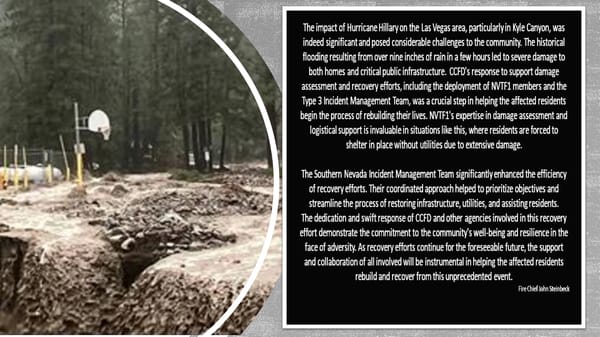
The Clark County Office of Emergency Management (CCOEM) is When working with jurisdictional partners, and the focused on the continued preparedness efforts within Southern community, to identify the threats Clark County faces, CCOEM Nevada. It truly takes a whole community approach to ensure the coordinates our Threat and Hazard Identification and Risk safety and needs of our community are met. First responders are Assessment Workshop to assess risk and set capability targets limited assets, and it is the community who comes to fill the gap. that reflect their preparedness goals, while answering three This is accomplished by engaging community members to take key questions: advantage of certain opportunities. One of the programs is The • What threats and hazards can affect our community? Community Emergency Response Team, which engages civilians to learn how to be part of the solution. We know that government • If they occurred, what impacts would those threats and emergency services will not meet immediate needs following a hazards have on our community? major disaster, especially if there is no warning as in an earthquake. • Based on those impacts, what capabilities should our We know people will attempt to assist those in need and community have? spontaneously volunteer. Therefore, training must take place to ensure the assistance from the community is done with calculated The THIRA/SPR goes beyond evaluating risk, as it also risk, accompanied by specific training. Another program to engage identifies what communities need to do to address that risk. community involvement, is The Great Shakeout. Nevada ranks third In cooperation with the incorporated cities, several in the country when it comes to earthquakes, and The Great applications are used to inform the public when hazards arise. Shakeout brings earthquake awareness to the community. CodeRed is an application which can issue alerts to let the community know what is coming their way. This is a Federal . Communication Center authorized program which enables Clark County to issue alerts. These alerts include, Advanced Weather Warning, Integrated Public Alert and Warning System (IPAWS), and send alerts via the wireless emergency alert system and the Emergency Alerting System. Another avenue in which people can opt into is the Southern Nevada Community Preparedness App to let people received updates which are pushed out by local jurisdictions.
The Office of Emergency Management works with all 38 Clark County Departments, but also has a great working relationship with the Southern Nevada Health District, Las Vegas Metropolitan Police Department, Clark County School District, University of Nevada, Las Vegas, and the incorporated cities. Preparedness and emergency management are primary responsibilities of these agencies, but a strong emphasis needs to look at the social vulnerability of residents. When working with Social Services and the Southern Nevada Health District, the Social Vulnerability Index can identify where these populations reside. With having this information, contact can be made with organizations outside of the fire department, which in turn decreases suppressions call volume. CCOEM participates in various committees, to include the Local Emergency Planning Committee (LEPC), the Urban Area Working Group (UAWG), the Nevada Resilience Advisory Committee (NRAC), the State Search and Rescue Board, the Emergency Preparedness Working Group (EPWG, and the Intrastate Mutual Aid Committee (IMAC). Nevada Task Force One (NV-TF1) is one of 28 FEMA task forces, is sponsored by Clark County Fire, and resides under the Office of Emergency Management. The Southern Nevada Type III Incident Management Team also sits under CCOEM. The Multi-Agency Coordination Center is operated by CCOEM, with its strength coming from Emergency Support Functions (ESF). These ESF’s are community partners who are the subject matter experts in their fields.
PRIORITY 5 ▪ Expand Best Practices and Implement Improvements to Fire and EMS Operations, Fire Prevention, and Investigations ▪ Goal 1: Collect and document CCFD best practices and identify resources needed to publicize, replicate and/or expand them. ▪ Goal 2: Develop policies procedures, training programs and mentorships to promote operational excellence, certification acquisition and/or maintenance, and cross- training of existing employees. ▪ Goal 3: Explore the feasibility of partnering with an existing paramedic school or creating a separate CCFD paramedic school to attract new recruits as well as retain existing employees interested in a paramedic career. ▪

With CCFD’s Operations consisting of both Fire and EMS responses, our members are tasked with a multi-disciplined approach to our community’s daily emergencies. CCFD Operations is committed to optimizing the time spent on training for both Fire and EMS. The Fire and EMS Training Divisions recognize the need to collaborate and implement training as a whole and are currently working on the design of a new Training Center that will host both Fire and EMS. This will lead to an efficient use of resources and time spent with our department. Our crews respond and handle calls swiftly with the goal of patient care and availability for the next call. CCFD is pursuing the use of technology to aid in response times as well as logistical support to minimize out of service time. Incorporating Fire Prevention and Fire Investigations into day-to-day operations of CCFD, will only continue to provide education and safety of all its members. This is another opportunity to capitalize on the industry experts on building construction, fire safety systems and fire dynamics. Regular contact with Inspectors and Investigators with our crews as well as prioritizing annual training from their respected divisions will keep our firefighters on the leading edge and keep our community safe.
2023 BY THE NUMBERS Southern Nevada Valley (SNV) Division Chiefs already harness each other’s experience and expertise by meeting on a regular basis to discuss a unified 146,626 approach to education and training throughout Southern Nevada. This collaboration allows our departments to stay abreast of the changes, deficiencies, and TOTAL CALLS opportunities that our crews will be exposed to on calls. Identifying ways to share training curriculums, resources, and ideas, will help CCFD and Southern Nevada 114,011 continue to conquer the next big challenge it may face. EMS CALLS CCFD recognizes the biggest challenge Operations faces is the continual increase in call volume and special events and the increase demand for fire stations and units 5,594 with a stagnating work force. In addition to adding a recruitment Chief, CCFD is FIRE CALLS committed to employ the use of data to trend, inform and aide in decision making on response models and unit deployment. In addition, we are reviewing our current career structure, as since COVID it does not support our departments vacancies or 27,021 growth. Prioritizing the importance of achieving paramedic certification amongst ALL OTHER CALLS our firefighters is our best path to growing the EMS division. CCFD will furnish the cost and time spent by our firefighters to achieve our goal of 50% Paramedics. SNV only has one paramedic school that is structured to support on duty education. CCFD will find a hybrid Paramedic school to host our own school that is conducive to our firefighter’s schedule. CCFD has an opportunity to garner interest in Emergency Medical Services by working with the County, Private Ambulance and Educational institutions to develop a career path early for graduating high school and college students within the Southern Nevada Valley. Focusing on these opportunities are vital to support CCFD in future years to come.
A PATH FORWARD This strategic plan update reflects a comprehensive approach that leverages input from key stakeholders within the organization. By integrating the perspectives of department leaders and staff, it ensures a more inclusive and robust strategy that aligns with the organization's objectives. The emphasis on a five-year implementation timeline, coupled with annual progress reviews, underscores a commitment to sustained growth and adaptability. The incorporation of agreed-upon performance measures and employee surveys demonstrates a commitment to accountability and transparency. These mechanisms will enable the organization to track progress effectively and address any challenges or issues that may arise promptly. Moreover, the acknowledgment of the need for flexibility to accommodate changing economic, regulatory, and policy conditions showcases a forward-thinking approach. By remaining responsive to external dynamics, the organization can proactively adjust its strategies and tactics to maintain relevance and effectiveness. Overall, this strategic plan provides a clear roadmap for future success while also recognizing the importance of agility and responsiveness in a dynamic environment. It lays the foundation for continued growth and innovation while ensuring that the organization remains adaptable to evolving circumstances.

